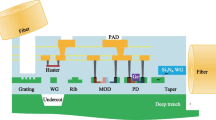Abstract
Liquid crystal displays had a humble beginning with wrist watches in the seventies. Continued research and development in this multi-disciplinary field have resulted in displays with increased size and complexity. After three decades of growth in performance, LCDs now offer a formidable challenge to the cathode ray tubes (CRT).
A major contribution to the growth of LCD technology has come from the developments in addressing techniques used for driving matrix LCDs. There are several approaches like passive matrix addressing, active matrix addressing and plasma addressing to drive a matrix display.
Passive matrix LCD has a simple construction and uses the intrinsic non-linear characteristic of the LCD for driving. Departure from conventional line by line addressing of a passive matrix has resulted in improved performance of the display. Orthogonal functions have played a crucial role in the development of passive matrix addressing. Simple orthogonal functions that are useful for driving a matrix LCD are introduced. The basics of driving several rows simultaneously (multi-line addressing) are discussed by drawing analogies from multiplexing in communication. The impact of multi-line addressing techniques on the performance of the passive matrix LCDs in comparison with the conventional technique will be discussed.
Similar content being viewed by others
References
T N Ruckmongathan, Some new addressing techniques for RMS responding LCD’s, a thesis submitted to Department of Electrical Communication Engineering, Indian Institute of Science, Bangalore, India (1988)
K G Beauchamp, Applications of walsh and related functions with an introduction to sequency theory (Academic Press, 1984)
N Ahmed and L K R Rao, Orthogonal transforms for digital signal processing (Springer-Verlag, 1975)
P M Alt and P Pleshko, IEEE Trans. ED 21, 145 (1974)
Y Kaneko et al, Proceedings of The Tenth International Display Research Conference, 100 (1990)
T J Scheffer and B Clifton, SID Digest of Technical Papers XXII, 228 (1992)
N V Madhusudana and T N Ruckmongathan, Proc. of Inter. Conference on Liquid Crystals, 499 (1979)
T N Ruckmongathan, International Display Research Conference (IDRC), 80 (1988)
T N Ruckmongathan and N V Madhusudana, Proceedings of the SID, 24/3, 259 (1983)
S Ihara, Y Sugimoto, Y Nakagava, T Kuwata, H Koh, H Hasebe and T N Ruckmongathan, SID 92 Digest, 232 (1992)
T N Ruckmongathan, Japan Display ’92, 77 (1992)
T N Ruckmongathan, Conference on Emerging Optoelectronics Technologies (CEOT-94), 302 (1994)
T N Ruckmongathan, SID 96 Digest, 562 (1996)
H Muraji, T Matsumoto, T N Ruckmongathan, K Sigeuo and K Ohara, SAE technical papers, 51 (1993)
T Buzak, SID 90 Digest, 420 (1990)
Shoichi Tanamachi, Display Devices ’97, 29 (1997)
Author information
Authors and Affiliations
Rights and permissions
About this article
Cite this article
Ruckmongathan, T. Driving matrix liquid crystal displays. Pramana - J Phys 53, 199–212 (1999). https://doi.org/10.1007/s12043-999-0149-x
Issue Date:
DOI: https://doi.org/10.1007/s12043-999-0149-x




